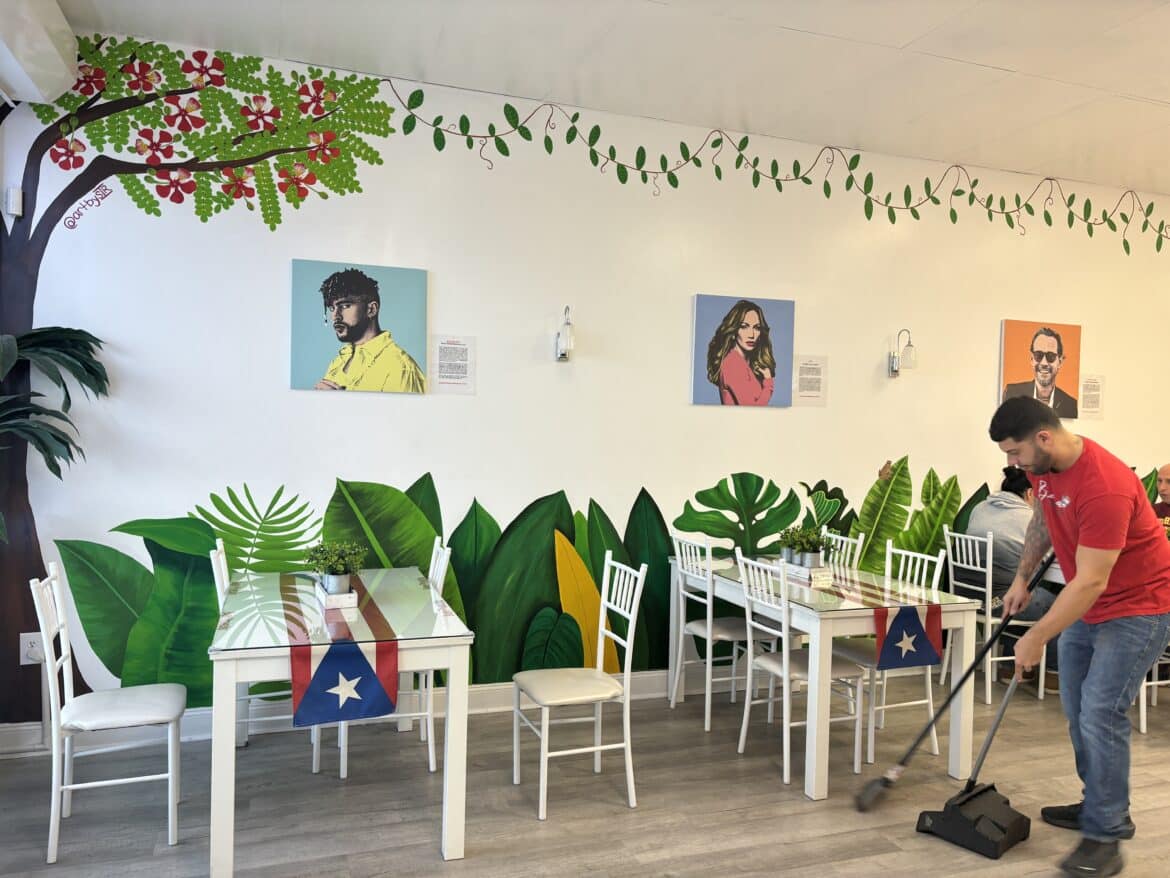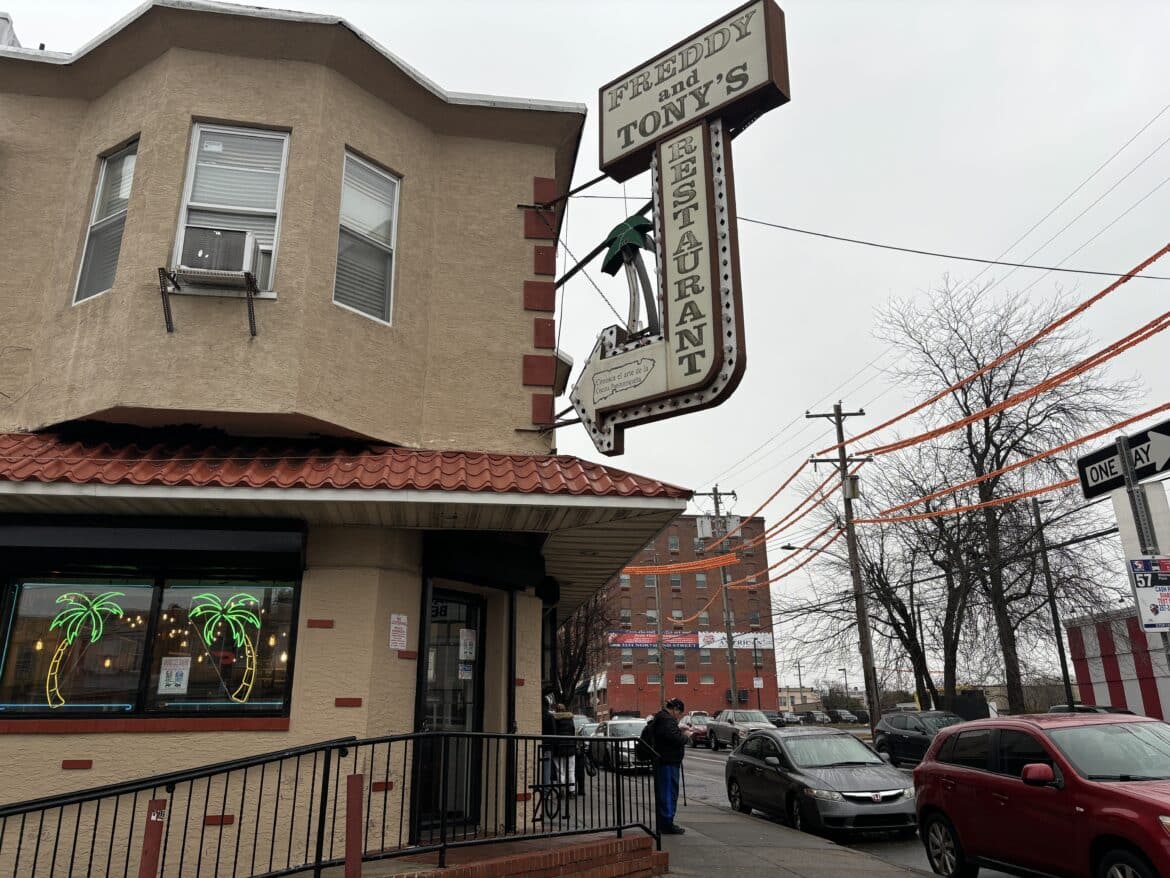It was around noon, and about six people were walking through the aisles of a Latino supermarket in Philadelphia. Rafael, the store manager, stood in front of the display case, hands in his jean’s pockets, looking outside. Next to him was the supervisor, Josué, arms crossed over his chest, gazing in the same direction as Rafael. Josué is Puerto Rican, and Rafael is Dominican. “That’s strange,” Rafael said. “Earlier, it was circling, and now it’s parked,” Josué replied, referring to a black SUV with tinted windows in the parking lot. Immigration and Customs Enforcement (ICE) agents often drive unmarked vehicles, like undercover agents.
I asked Josué, while he continued to look through the window, if they were watching out for ICE. Pointing to Rafael, he told me to speak with him. “Sales have dropped, people are hiding,” Rafael told me.
Their real names have been changed to protect their identities after anti-immigrant operations began just days after Donald Trump assumed the U.S. presidency. The supermarket sat in a large drive-in-style parking lot surrounded by several businesses. Inside, they sold yucca, sweet potatoes, and yautía, with reggaeton playing in the background.
In North Philadelphia, Dominican and Puerto Rican communities blend much like they do in Santurce, Puerto Rico. In Puerto Rican restaurants, bachata plays, and many employees are Dominican. In Dominican restaurants, salsa is on the speakers, and some employees are Puerto Rican. More than 22,000 Dominicans live in Philadelphia, and according to Census data, they are concentrated in the same neighborhoods as most of the city’s 129,000-plus Puerto Ricans: Kensington, Fairhill, and Hunting Park in North Philly.
In a nearby government office for the Dominican community, there were more people than in the supermarket. “People are coming to update their ‘papers’,” said the manager, sitting at her desk, right next to two employees attending to people through plexiglass. She also asked not to be identified. “People are scared and nervous,” she mentioned. When I told her that ICE had also detained Puerto Ricans, she raised an eyebrow and said, “But how is that possible?”
A man stepped out from the office’s side hallway, broom in hand, ready to sweep the sidewalk. “That man has no feelings,” he said, as if finishing a conversation I hadn’t heard. But it wasn’t hard to guess who he was talking about.
The most common topic that rainy Friday in late January in North Philly was the Trump administration’s mass deportation policy.
“The flurry of first-day activity was itself a signal to immigrant communities that they are under attack — but it is also a blueprint for future actions. Most of the policy changes heralded in these executive orders take the form of instructions to federal departments or agencies. Some of these were executed within the first 48 hours; others will require further scrutiny and guidance in the coming weeks and months and will be subjected to lawsuits challenging their implementation,” says a report from the American Immigrant Council (AIC), published in January.
At the same time, the AIC warns that some provisions of the executive orders are intended solely to intimidate and confuse. Nevertheless, everyone without legal status in the United States will be vulnerable, especially in the early days of the operations, the report indicates. They also point out that the Trump administration’s threat to cut funds to “sanctuary jurisdictions,” like Philadelphia, could deter local governments from continuing with that immigrant protection policy. Sanctuary jurisdictions or cities are places that do not cooperate with federal agencies in the identification or legal processing of people for immigration status issues.
AIC also warns that anti-immigrant policies could increase racial profiling, the identification of ethnic or racial characteristics based on superficial physical traits. Evidence of this practice, extremely subjective, based on prejudice and reflective of racism, is that not even Puerto Ricans, U.S. citizens since 1917, were spared from the first wave of ICE raids. On January 24, a Puerto Rican veteran was detained at a seafood processing plant in Newark, New Jersey.

Photo by Joel Cintrón Arbasetti | Centro de Periodismo Investigativo
On January 28, ICE agents entered Boricua Restaurant in North Philadelphia, intending to inspect the kitchen. One of the owners, Rico — a former Puerto Rican police officer — refused them entry, stating they did not have a judge-signed search warrant. Rico recounted the incident in a video he uploaded to Facebook with his business partner, Héctor Serrano. In the video, he describes how one of the agents, frustrated at being denied access to the back of the restaurant, loudly remarked upon leaving that they probably didn’t want to let them in because they were undocumented.
Three days after the incident, Boricua Restaurant was back to business as usual. Rico manned the cash register, swept the floor, and wiped down tables before seating customers waiting in line. The restaurant’s walls were adorned with “Pop Art” portraits of Bad Bunny, Jennifer López, and Marc Anthony. Had the ICE agents glanced at the menu when they entered, they would have noticed a section titled “Puerto Rico Facts.” The first point read: “Puerto Ricans are United States citizens.” It continued: “Puerto Rico is considered the world’s oldest colony.” Another fact stated: “Puerto Rico pays billions in federal taxes each year to the U.S.” A final point added: “It pays more taxes than 15 states combined.”
Or maybe they saw the menu and decided to ignore what it said.
I tried to speak with the restaurant owners about the ICE intervention, but they said they were overwhelmed and tired of giving interviews, and that by uploading the video they had already fulfilled their purpose of educating the community.
Anti-immigrant policies have also translated into civil hatred: on January 26, a Puerto Rican restaurant in Muscatine, Iowa, was vandalized with the Nazi swastika and the message “We don’t want you here PR.” Other Latino restaurants in the area were vandalized with similar messages. A woman named Alisa Rilla Nicols Staats was arrested as a suspect. She was charged with a “hate crime.”

Photo by Joel Cintrón Arbasetti | Centro de Periodismo Investigativo
About a 40-minute walk from the Latino supermarket where Rafael and Josué watched the black SUV parked in the lot with concern, along Kensington Avenue and then Allegheny Ave, you reach Freddy & Tony’s, one of the most recognized Puerto Rican restaurants in Philadelphia. There, a Dominican employee also said that sales had dropped, using the same expression as his compatriot from the supermarket: “people are hiding.”
On my way home, the Dominican driver in her twenties was talking on the phone, very quietly, almost whispering. She had Bad Bunny playing on the radio. The only words I could distinguish, unintentionally, from her conversation were “migration” and “papers.”
During his electoral campaign, Trump promised the “largest mass deportation in the history of ‘America’.” Despite this, in 2024 the Republican candidate increased his votes among Latinos, and in the general population, compared to the elections of 2016 and 2020.
However, in the last elections, Latinos favored the Democratic candidate, Kamala Harris, by 62%.
So far, the president who has deported the most people in U.S. history has been Democrat Barack Obama, with 3,175,737 in his first term, between 2009 and 2012, according to the Office of Homeland Security Statistics. In his second term, from 2013 to 2016, Obama deported 2,070,694 people. Even President Joe Biden deported more people during his presidency, 4,677,549, than Trump did in his first term: 2,001,290.
Now it remains to be seen if the operations of the first week of 2025 under Trump were just a spectacle to create the effect of showing the quick action he promised his electorate, or if he will continue throughout his term with this aggressive policy that endangers every immigrant, including those with “citizenship.”




How are they detaining Puerto Ricans? They’re Americans!
The stories coming out of Philadelphia about ICE raids targeting Dominicans and Puerto Ricans are just heartbreaking—and honestly, kind of terrifying. What struck me most is how it’s not just undocumented people being affected. Even U.S. citizens are getting caught up in this mess because of racial profiling or simple ignorance about who’s actually a citizen.
The article did a really solid job of connecting the dots between these raids and the broader immigration enforcement policies under Trump. It’s not just a one-off incident—it’s part of a bigger pattern that’s leaving entire communities feeling unsafe and constantly on edge.
What really hit hard were the personal stories of people who were wrongly detained or questioned just because of their background. Can you imagine being born in Puerto Rico, a U.S. territory, and still having to “prove” you belong? That’s outrageous.
I also appreciated the reporting’s depth—it wasn’t just about the raids, but about the history, the fear, and the legal grey areas that allow this kind of thing to keep happening.
I can see why they detain a Puerto Rican to confirm in fact he’s Puerto Rican. Being one myself have met Dominicans trying to pass off as Puerto Ricans but once he’s proven to be a citizen should be immediately released on the spot with no further harassment.